Note: During the pandemic shutdown, the acclaimed artists residency and art venue, Artpace, in San Antonio, has a bit of extra room in its residency space to host an informal writing residency in collaboration with Glasstire. Colette Copeland, a North Texas-based artist, educator, and longtime Glasstire contributor is the current resident of the two-week program. This diary entry is part of a two-part installment about her days in San Antonio; Copeland will also bring us several artist profiles. Read part one here.
Day 5: Last Friday, I got a private tour of Ruby City with its Head of Collections and Communication, Kelly O’Connor, who has worked with the late Linda Pace’s Foundation (and now Ruby City) for 15 years. Ruby City’s Waking Dream exhibition features works from its permanent collection and explores themes of home and self. Also on view is a magnificent three-channel video installation by Isaac Julien titled Western Union: Small Boats, and a site-specific installation The Craft of Resistance by Margarita Cabrera. At first I thought the pairing of two such disparate artists was odd, but after seeing both in the space, it made sense. The overarching theme is migration, and although Julien and Cabrera approach it from different perspectives, the art creates a dialogue around issues of geographic borders. Julien’s work explores the history African migration and diaspora, while Cabrera’s work uses the butterfly as a symbol of resilience, as well as referring to migratory patterns where geographic boundaries dissolve.
Next was my first visit to the McNay Art Museum. The house and grounds are magnificent. The Robert Indiana: A Legacy of Love show is well-curated, and the theme of love resonates deeply, given our current isolation and political climate. Situated at various points throughout the space are signs asking visitors to text a specific work to a phone number to receive a poem. I loved this gesture — the generous gifting of words will remain on my phone for the days when I need a bit of hope.
In the galleries of the McNay’s permanent collection, Vincent Valdez’ painting The Strangest Fruit stopped me in my tracks. I saw a print from the same series in the Artpace hallway, but had never seen paintings from this series in person. Referencing the iconic Billie Holiday song about lynching, Valdez’ two Latino subjects appear suspended, as though hanged, but with the noose erased. The rope’s absence signifies a deeper, buried aspect of racism inherent in our culture.
Also at the McNay, Kelly O’Connor’s montaged wallpaper installation in the lobby, Multifaceted Woman, playfully deconstructs stereotypes perpetuated by Disney and other popular children’s culture like The Wizard of Oz, Alice in Wonderland and Willie Wonka & the Chocolate Factory. The work is also inspired by pioneering designer, animator and artist Mary Blair. It reminds me a bit of Hannah Höch’s collages, but with a healthy dose of sugar and spice. Subversion lies beneath the surface.
Friday evening, I met with artist, curator and gallery director Rigoberto Luna at Presa House to view the performance and video installation work of Andie Flores. Flores uses subversive humor to examine identity as a brown queer woman; her work also explores the ways surveillance disrupts social interactions and connectivity. (My interview/profile with Flores is forthcoming.)
Day 6: Saturday I spent the morning at Clamp Light Studios & Gallery with artists Justin Korver, Alyssa Richards, Sarah Fox, and Randy Guthmiller.
Justin Korver’s and Alyssa Richards’ exhibition What We See, What We Know investigates personal ideologies and looks at symbols and rituals through new perspectives. Korver has two groups of digital prints. The first series, Target Variations, uses a 10-ring target as the source image, with a wood grain pattern in the background. The targets morph into poly-centric shapes and resemble cell division. Korver’s second group, He & Him, is three text-based silkscreen prints with black-and-white targets in the background. “He felt as though he was a target” and “The hairs on his neck stood up” speak to a conflicted masculinity and questions the predator-prey relationship.
Alyssa Richards’ work investigates research methodology as a means to understand human behavior. Richards’ interest lies at the intersection of design and fine art. In her two current series, Research Studies and Tough Makes Tender, on display at Clamp Light Gallery, she explores the domestic space of the kitchen through a scientific lens. Research Studies features photographs of food with a gingham silkscreened pattern on the framing glass. The composition evokes a placemat, but instead of a plate, the circular photographs of food resemble Petri dishes, as if the viewer were looking through a microscope. In the Tough Makes Tender images, Pyrex, which is used in cooking (but was originally invented for industrial purposes) serves as a metaphor for relationships. Both series reflect on the dinner table as a site of comfort and conflict.
Sarah Fox, who is the co-director at Clamp Light, discussed with me the challenges of making art as a single mother during the pandemic while homeschooling her son. Her multi-media narratives, often animated, embody the female experience, including themes of loss, love and sexuality, told through hybrid creatures. The rabbit is a recurring motif in Fox’s work. She describes the character as a manifestation of herself: a symbol of creative fertility and making something from nothing. During the pandemic, Fox has been working on elaborate embroidered panels — it’s a process she can do at night and at home when her son is in bed. Although Fox’s creatures resemble those from fairytales, there’s always darkness beneath the surface.
I haven’t seen artist Randy Guthmiller since he left Dallas for San Antonio, where he’s now Manager of Visitor Experiences at Ruby City. At Clamp Light, we talked about how art can help heal trauma, and how intuition, dreaming, and stream of consciousness can aid the creation process. Guthmiller is preparing for his exhibition Heart Light, opening in February at Clamp Light. The show will include drawing, painting, sculpture, as well as a performance — a heart-opening ceremony — which promises to be a profound and generous gesture.
Day 8: Monday I spent some time with the new exhibition at Artpace, After Carolee: Tender and Fierce, curated by Annette DiMeo Carlozzi. It commemorates the pioneering feminist artist Carolee Schneeman (1939-2019) who was an Artpace resident in 1999. Carlozzi invited 14 Texas-based women artists who had not previously shown at Artpace to exhibit work in the spirit of Schneeman’s practice. I won’t say too much about the show since another Glasstire contributor is writing a feature-length review. I did tune into the Zoom talk with Carlozzi and some of the artists; this show is worth a trip when Artpace reopens this spring. Make sure to get the story behind Schneeman’s controversial work during her residency; it involves her cat. Nothing much shocks me, but Schneeman’s Artpace work, according to the curator, left viewers speechless.
I had a chance to chat with one of the artists, Kristen Cochran, who has produced a new work, cured bodies or the transmogrication of labor into sausages or how atrophy leads to alchemy leads to agency. With a nod to Schneeman’s iconic work Meat Joy, Cochran spent quarantine learning how to cure sausages, and applied these techniques to work garments (sweat equity) donated by Artpace staff and artists in the exhibition. A vegan meat joy! Cochran’s sculptures here are both alluring and grotesque, and poignantly address questions of what it means to “cure” — from illness and pain, as well as a method to preserve, purify and protect.
Later, unrelated to the Schneeman show, I spoke with San Antonio-based artist Christie Blizard about her work. It’s edgy and weird in the best possible way. After curator Sarah-Jayne Parsons at TCU saw Blizard’s video from her Artpace residency, Parson commissioned Blizard to make a work for the 100-year anniversary of when famed opera star Enrico Caruso sang at the Cowtown Coliseum in Fort Worth. For the past one and half years, Blizard has been working on an alien opera, Let My Body Eat the Sun, filmed in the coliseum. Not only is Blizard wearing the composer hat here, but she also directed, filmed and edited the video, as well as designed and made the costumes. Her non-binary, posthuman/transhuman characters defy description. The work will debut at Fort Worth Contemporary Arts at TCU in Fort Worth in March.
Day 9: Tuesday I spent the day at University of Texas at San Antonio, first filming with Assistant Professor in New Media, Sarah Lasley, followed by a studio visit with Associate Professor in Photography and Performance, Libby Rowe. My afternoon was filled with grad student reviews. I always enjoy reviewing student work, especially grads. I was impressed with all of the students’ work; all were excellent at communicating their concepts, inspirations and processes, and weren’t afraid to ask questions or request feedback.
I chose two students to highlight here. Both are artists to watch for:
Trulei Versatile’s work is about what she describes as Blackness. We spoke about police violence, assimilation, and cultural stereotypes surrounding Blackness and the Black experience. Versatile is a persuasive speaker. Her work is based in photography and portraiture, but this semester she experimented with a three-part series of performances that address the Black experience of police brutality. In one video, she becomes the gun. In her Casket Ready series, she deconstructs cultural sayings. In the Southern Baptist church, “casket ready” means you look so good that you could be put in the casket just as you are. I interpreted the saying and the body language in the image as a woman with her hands up, either in a gesture of ecstasy, or as if she had just been shot.
Miguel Rodriguez’ work explores his cultural identity. He identifies as Chicano, but spoke about how the word may be problematic or used as a means to categorize in a derogatory way. He also expressed his desire to create a utopia that’s beyond categorization. Given the limitations of studio time (at school) during the pandemic, Rodriguez has lately created net art and explored websites as a repository for his ideas. In his work Bienvenido al Paradiso (Welcome to Paradise), Rodriguez has created a sculptural tableau for a performative self-portrait.

Video still from Sarah Lasley’s “If I Dont Have You.” On left: actor Gabi Magaly Cruz. Yours truly is on the right.
On to some UTSA faculty: My adventures with Sarah Lasley included a fun but intense morning of green-screen filming at the university. Her work exposes complicity in spectatorship by complicating the relationship of the viewer to the viewed, as well as the notion of how the camera performs as a powerful voyeur. My character is a blonde, middle-aged crying woman who suffers from white fragility and white guilt. In other words, I played myself, albeit in a more exaggerated role. Who knew that two hours of fake crying with artificial tears could be so physically (and emotionally) exhausting? The two-channel video work If I Don’t Have You features my character in a snowy landscape as a karaoke rendition of Whitney Houston’s song I Have Nothing plays. The second screen features a young Latino woman, played by Gabi Magaly Cruz, guarding a canyon, stepping out to stop the camera’s intrusion. Her character is badass. With humor, the work weaves tropes of whiteness, visibility, boundaries and the speculative landscape; it will be on view in a two-person show at San Antonio’s Dock Space Gallery later this spring.
Libby Rowe’s work addresses issues of gendered identity and social belonging. I’ve been a big fan of Rowe’s work for years. Much of her work is photo-based, but she also works in performance and sculptural installation. In 2013, we showed together at Red Arrow Contemporary in Dallas.
Her two recent series Microaggressions and Looking for the Woman of My Dreams use subversive humor to deconstruct the world of online dating. Looking for the Woman of My Dreams juxtaposes anatomical queries from men with videos of Rowe’s body. For Microaggressions, Rowe says that often only a few opening volleys were needed before men went for the “Big Sell,” i.e. the dick pic. The resulting series features 69 pencil or ink drawings made from unsolicited photos Rowe received. The two series form portrait of contemporary masculinity during the pursuit of “love.”
Day 10: On Wednesday morning, I had coffee with Trish Simonite. She’s a retired photography professor from Trinity University. She’s busier than ever, working on numerous commissions for public art projects in the health care system. Her current series Remnants was influenced by the onset of the pandemic, by the Trump administration’s assault on the environment, and by his administration’s disregard for science. And her garden has been a refuge during the lockdown.
Lunch was with the legendary Ethel Shipton. It’s an honor to meet not only a great artist, but someone who has been and continues to be a force in developing the arts in San Antonio. We spoke a bit about her time as a photographer for the House of Representatives when Ann Richards was Governor of Texas. Most of our conversation focused on ways to pay it forward to younger artists. Represented by Ruiz-Healy, Shipton currently has a few works in the Robert Indiana exhibition at the McNay. The two text-based screen prints she sent me for this article emphasize the current political climate — one of frustration, but also hope that change is coming.
Next stop was Jenelle Esparza’s studio, a beautifully renovated space behind her house. Esparza is an interdisciplinary artist whose work focuses on agriculture and the land through the lens of identity, culture and race. Esparza is a 4th-generation Texan; her family were cotton farmers in South Texas. Her most recent exhibition Through The Threshold, at the San Antonio Botanical Gardens, features a hundred bronze cast cotton spurs (the husk that remains after the cotton is picked), against a midnight blue wall. The installation was on display in a historical wooden building at the Gardens. The work is a poignant homage to the artist’s grandmother, who taught her to pay attention to her dreams and celebrate her imagination. Featured in the image is Esparza holding a bouquet of the bronzed cotton spurs in front of two new woven tapestries embedded with mesquite beans.
My last stop of the day was the San Antonio Museum of Art (SAMA). I scheduled a walking Zoom session with Carolyn Sortor, Glasstire’s current virtual artist-in-residence, to give her an abbreviated guided tour of the Museum’s contemporary collection. We focused on the gallery called This is America, in which the works were selected from the permanent collection by Trinity-SAMA Postdoc Fellow Yinshi Lerman-Tan in conjunction with a Trinity course about objects exploring themes of borders, identities and histories. Featured in the photo is the Willie Cole work How Do You Spell America?. I then met with SAMA curator Suzanne Weaver and spent an hour walking through the collections, stopping to marvel at certain gems and talking with her about her time as a curator at the Dallas Museum of Art, our shared acquaintances in Dallas, her current projects at SAMA, and how we try to achieve and sometimes fail at the work-life balance. We also shared our love (and subsequent shared absence) of travel.
Day 11: I spent Thursday with Heyd Fontenot, whom I’d not seen since he left Dallas three years ago. We spent hours walking, talking and biking along River Walk on the Mission Trail. Fontenot is an abundant artist in every sense. His creative output is awe-inspiring, and he cares deeply about helping build each art community he lands in. His multimedia work includes drawings of nude models (often artist friends), as well as large-scale paintings, installations, and films. His work is subversive and often funny, undermines middle-class respectability, and borrows themes and aesthetics from such unlikely places as secret societies, rodeos, brothels, churches and interior design showrooms. We discussed his two-year residency in Tulsa and his subsequent move to San Antonio. He currently has work on view at C7 Gallery in San Antonio, and 25 works in the show Trauma and Response curated by Scott Scherer at UTSA gallery, which opens next week. His new wall paintings (detail of Fig painting shown) will be featured in April-May at Galveston Arts Center.
Day 12: Friday I met with artists Jennifer Ling Datchuk and Mari Hernandez. Datchuk and her husband Ryan Takaba (whose work at Blue Star I wrote about in last week’s recap) share a lovely studio behind their house. Datchuk’s primary medium is porcelain, and her work explores her identity as a biracial, third-generation, Chinese-American woman. As a material, porcelain’s history originates in mainland China. The symbolic connotations of value, desire and whiteness are themes prevalent in the Datchuk’s sculptures. Featured in the photo above, Datchuk holds two porcelain works: Pussy Power (on left), and a re-imagining of a pornographic ashtray, Self-care Lady.
Hernandez and I met via Zoom. We looked at and discussed the last four years of her self-portrait photographs that explore Chicano/Chicana identity, as well as the representation of Chicana women in the history of photography and history of colonialization. To question historical narratives of power, Hernandez creates both female and male characters using prosthetics, wigs and elaborate costumes. The series Hombres examines patriarchal archetypes representing different moments in history. In Los Hermanos, the viewer witnesses a family divided by political loyalty and fear. Her most recent triptych, Of Women, pays homage to survivors of domestic violence. It will be featured in an exhibition later this year organized by the city of San Antonio’s Department of Arts and Culture.
Day 13: On Saturday I met with Jeff Wheeler of C7 Gallery, and Justin Parr at his art compound adjacent to Hot Wells Park. C7 is a new gallery approaching its one-year anniversary. It’s housed in a building filled with artist lofts and a maker space. Wheeler has planned, for post-Covid times, a Jad Fair retrospective, and a collaboration with Heidi Vaughn Fine Arts (Houston) to showwork from the Lester Marks collection. In this photo, Wheeler is featured in front of his own work, which includes painting, collage, sculpture, and installation of pop-culture imagery that often takes on current political events.
Justin Parr is the caretaker of the ruins of the former hotel and hot spring pools at Hot Wells Park. We spoke about his work as a glassblower, and his social practice called Esferas Perdidas (Lost Spheres), for which he hides his glass-blown, prized marbles throughout San Antonio for people to find. His FB group of the same name has 8,000 members and has spawned other marble groups across the globe. In this photo, he stands next to his work that he describes as a “weird” homage to the late San Antonio artist Chuck Ramirez. Ramirez’ original work featured pickle jars filled with pigment from Morocco and displayed on his “table of love.” I’m sure there are a lot of tables of love in San Antonio, but Parr’s is likely the longest.

Buster Graybill’s R.Mutt. Recently on view at the McNay in San Antonio, soon to be seen at Dock Space
On Saturday evening, I visited artists Buster Graybill and Jasmyne Graybill at their house, and over a roaring outdoor fire we discussed art and life. Buster’s R. Mutt utility vehicle was on site. I’ve seen online images, but it was cool to step inside it and imagine what life would be like as a nomad. The R. Mutt, which stands for Renegade Modernist Utility Travel Trailer, is a contemporary nod to Marcel Duchamp’s theories, or as Buster describes, a “readymade for survival.” We discussed how the vehicle was originally designed as a possible solution to how an artist might survive outside of the art market. In the current context, it no longer serves as a theoretical model, but rather as a practical object to be used during more frightening times. It’s scheduled to be on view at Dock Space Gallery in San Antonio later this spring, along with work by Sarah Lasley (mentioned above). To watch a video tour of Buster Graybill’s R. Mutt, go here.
Jasmyne Graybill’s work explores the balance between nature and culture. She works with found objects; using polymer clay, she sculpts forms and textures that reference micro-ecosystems. Rusted garden tools sprout yellow, orange and green flora and fauna that resemble barnacles, fungi, and lichen. Her objects symbolize her connection to the land — she is a prolific gardener. Her background as a painter comes through in her detailed color, surface, and texture. The work is at once beautiful and grotesque, as we contemplate how time and nature ultimately take control and reclaim… everything.
Day 14: Sunday was my last day in San Antonio. I met with Parr again, and artist David Adams Salinas at Fl!ght Gallery to see Salinas’ photographic show Dear San Antonio. His method is rooted in street photography tradition: Salinas walks the streets of San Antonio looking for interesting people to meet and photograph. Although the work begins as a “straight” portrait, the artist’s experimental darkroom process creates streaks, drips and splatters, which leads to visceral and evocative images that personify emotional intensity. As a former darkroom geek, I was simultaneously awed and horrified by his printing process, which involves splattering and painting chemicals onto the prints on his concrete studio floor. Sometimes debris and coffee, beer, and blood make their way on to the prints.
Until next time… .



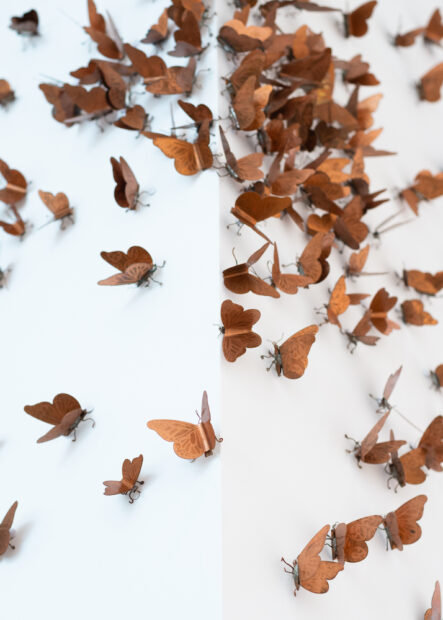

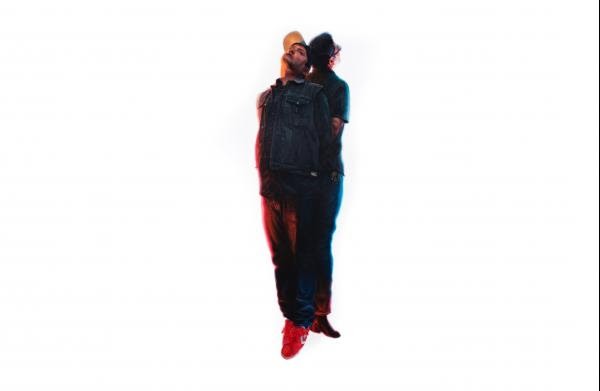
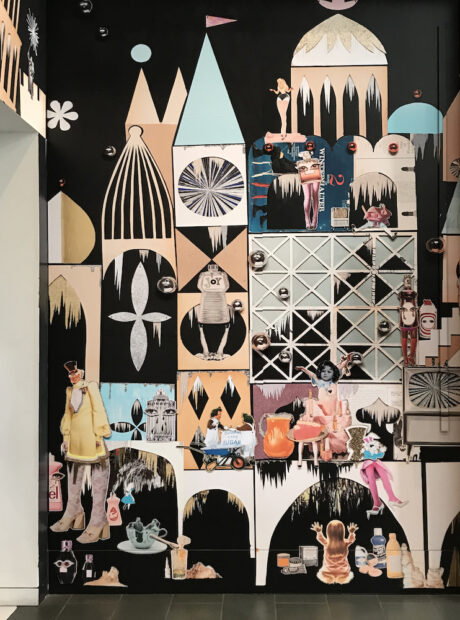
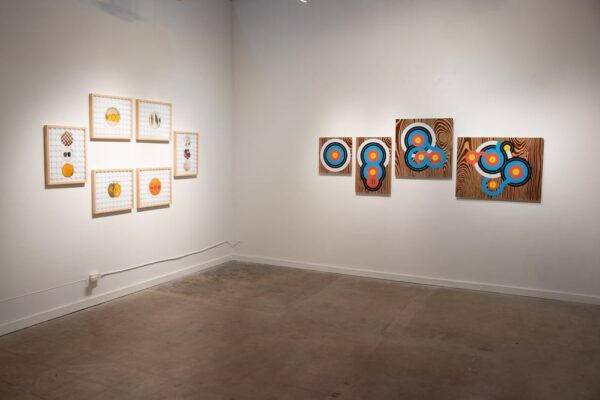



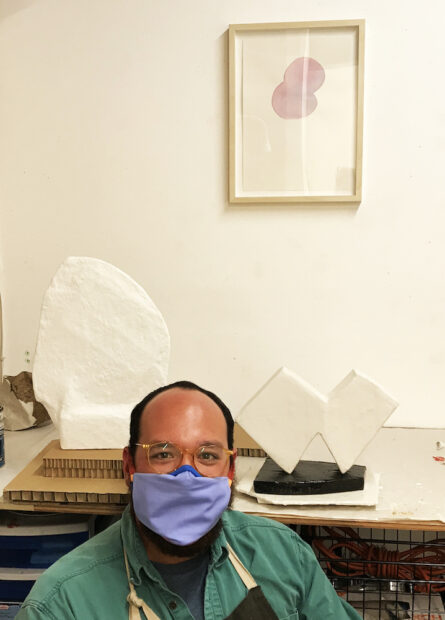
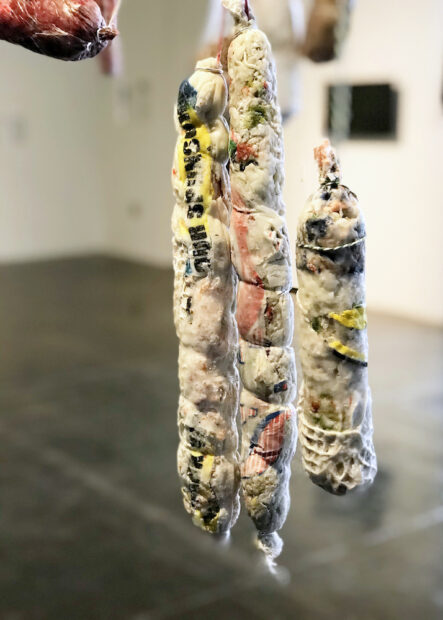
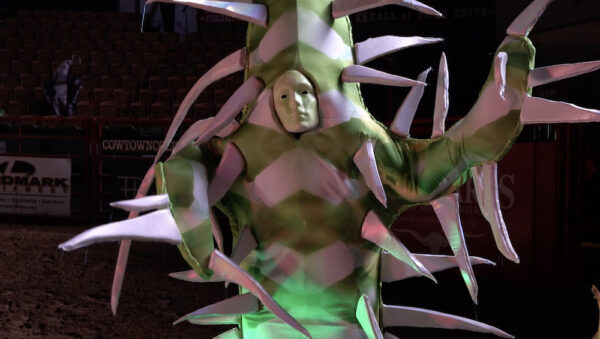

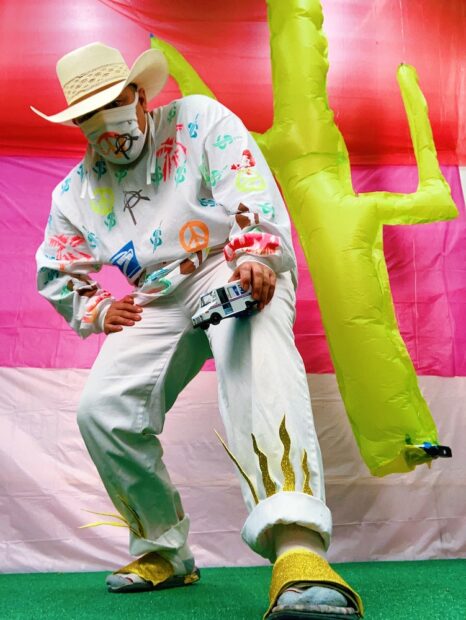
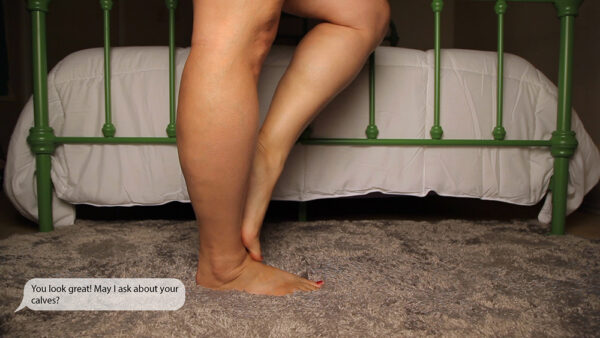
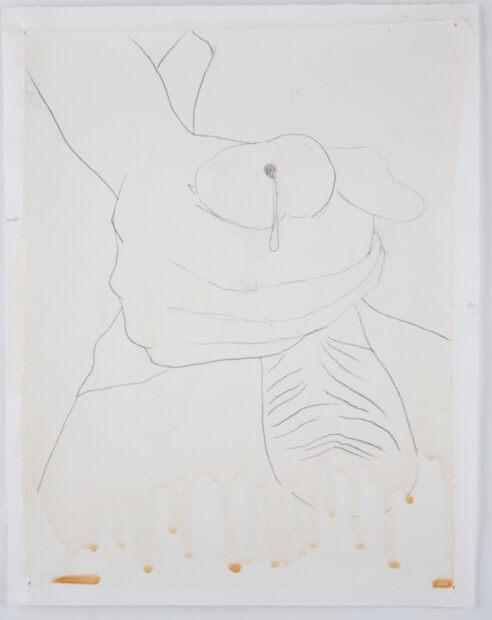
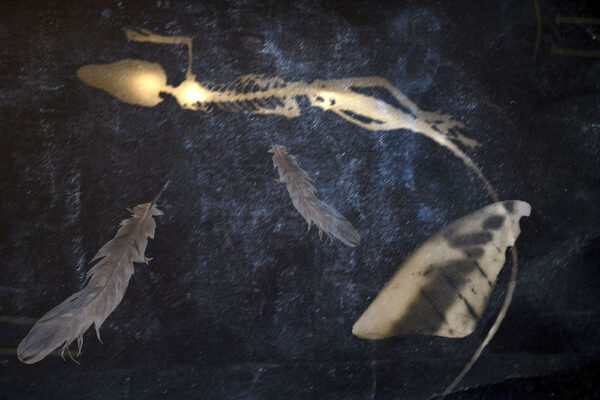

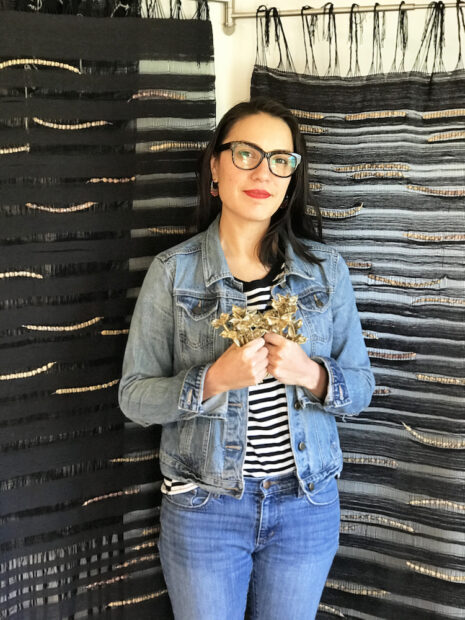
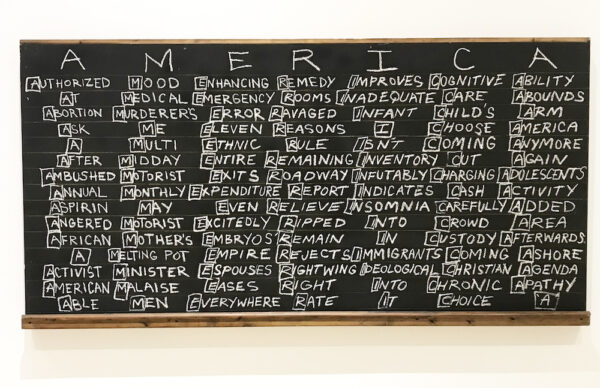

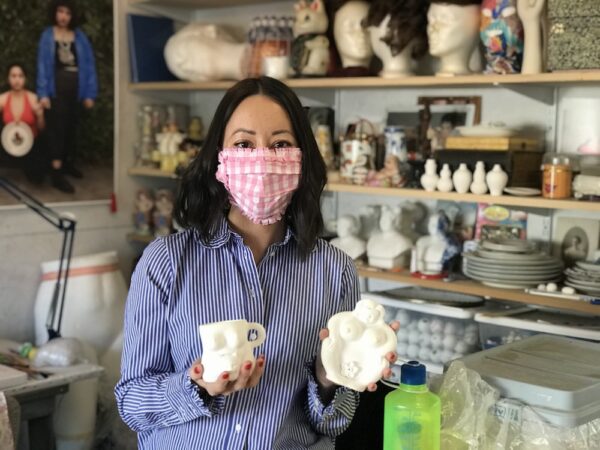
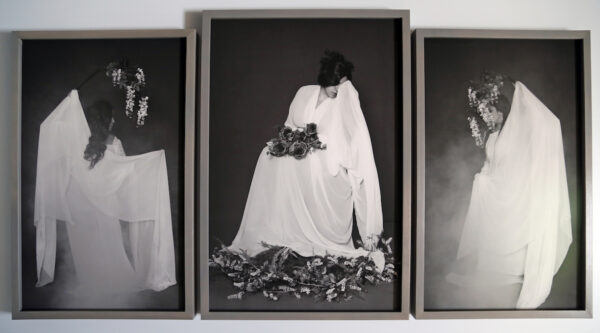

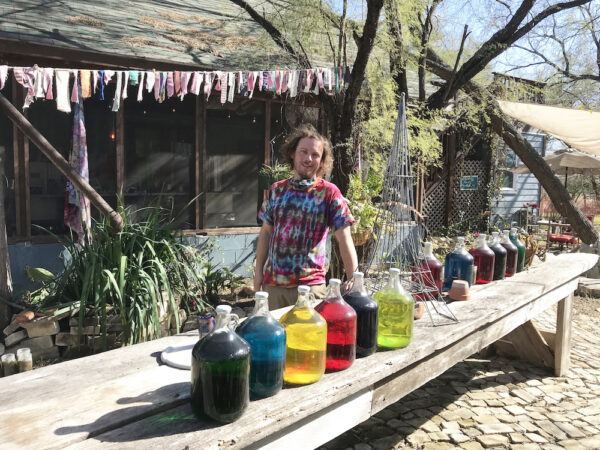
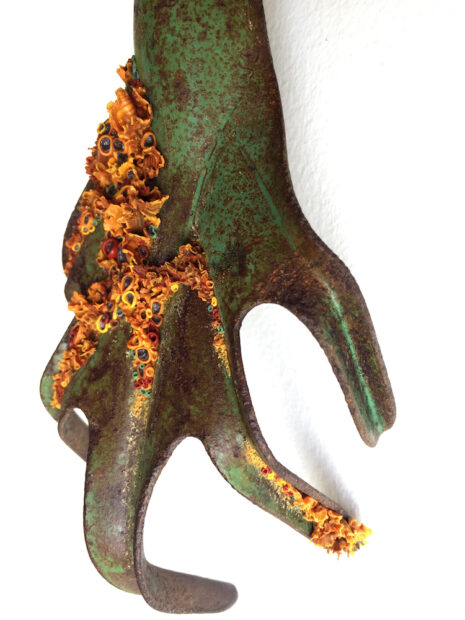


1 comment
Randy Guthmiller is super awesome !